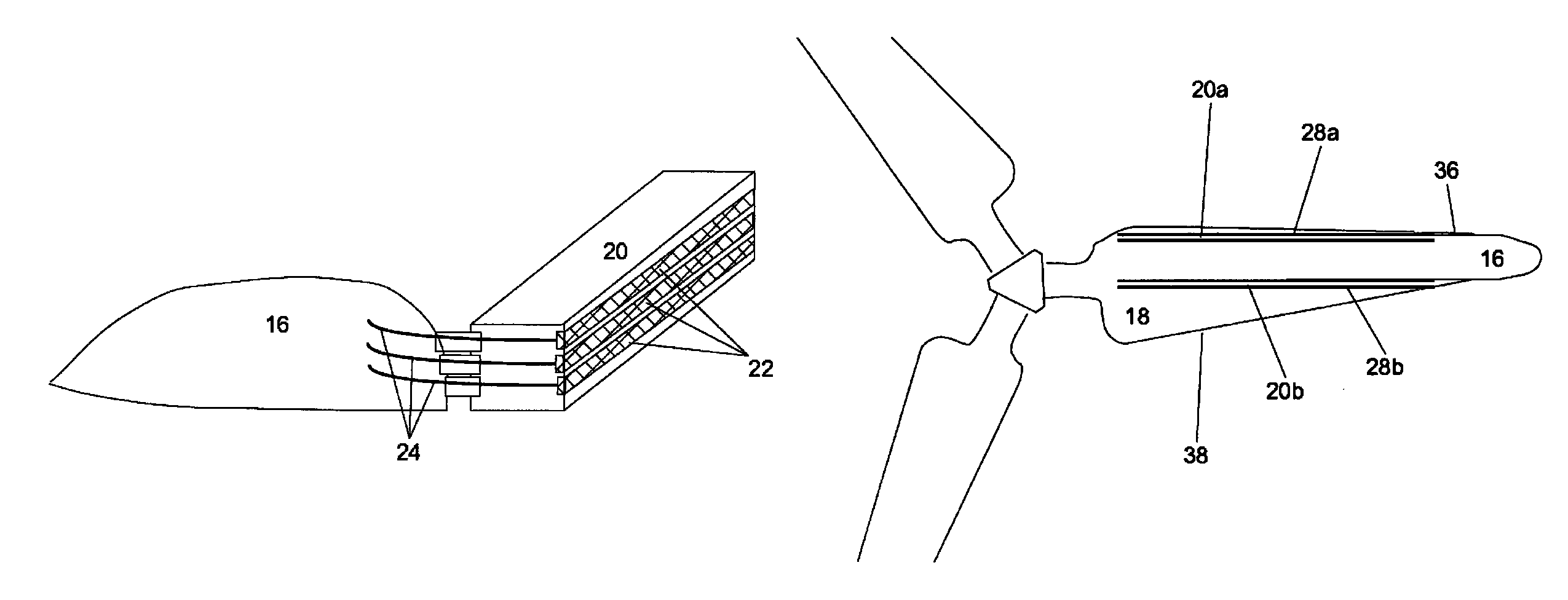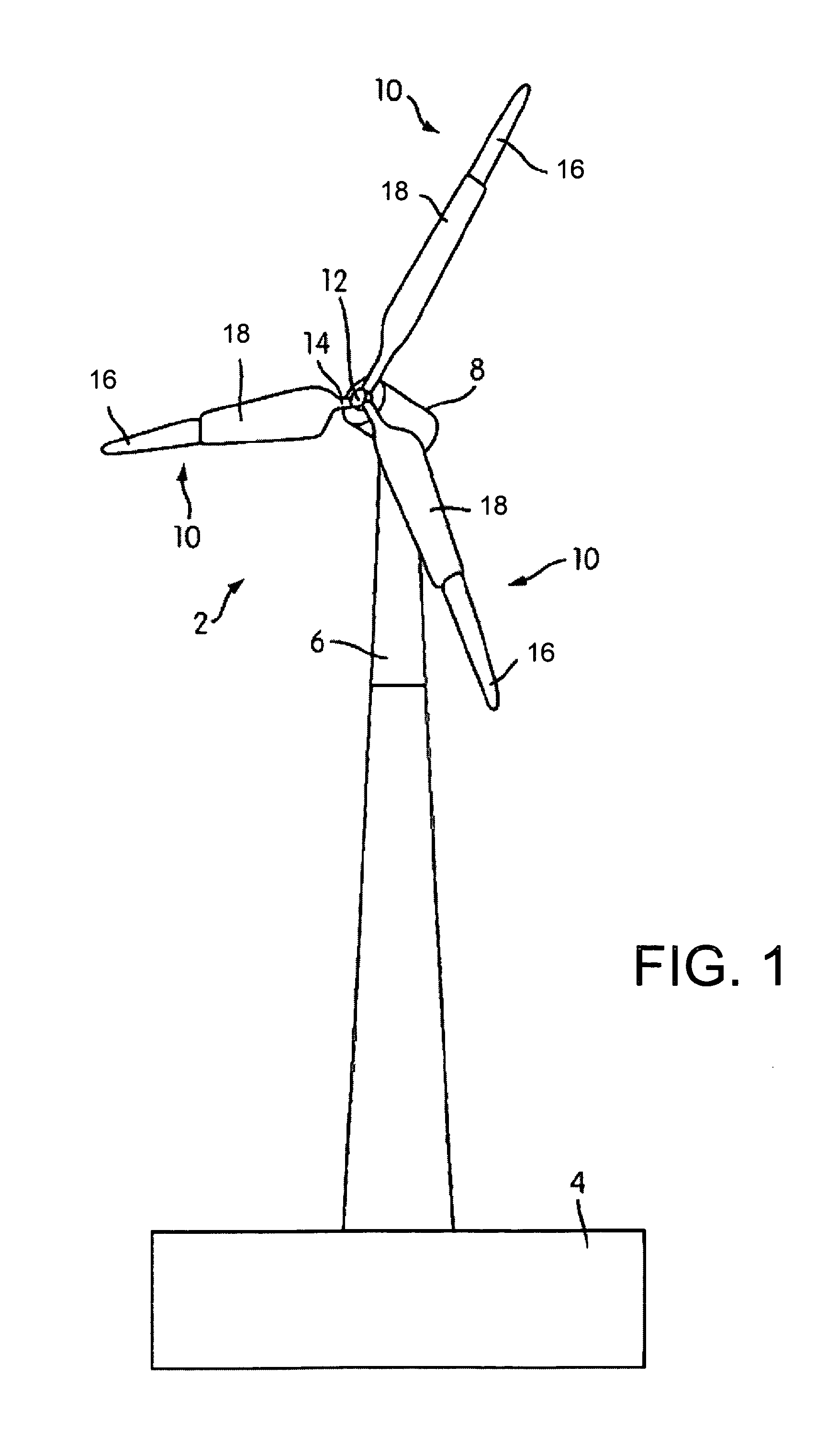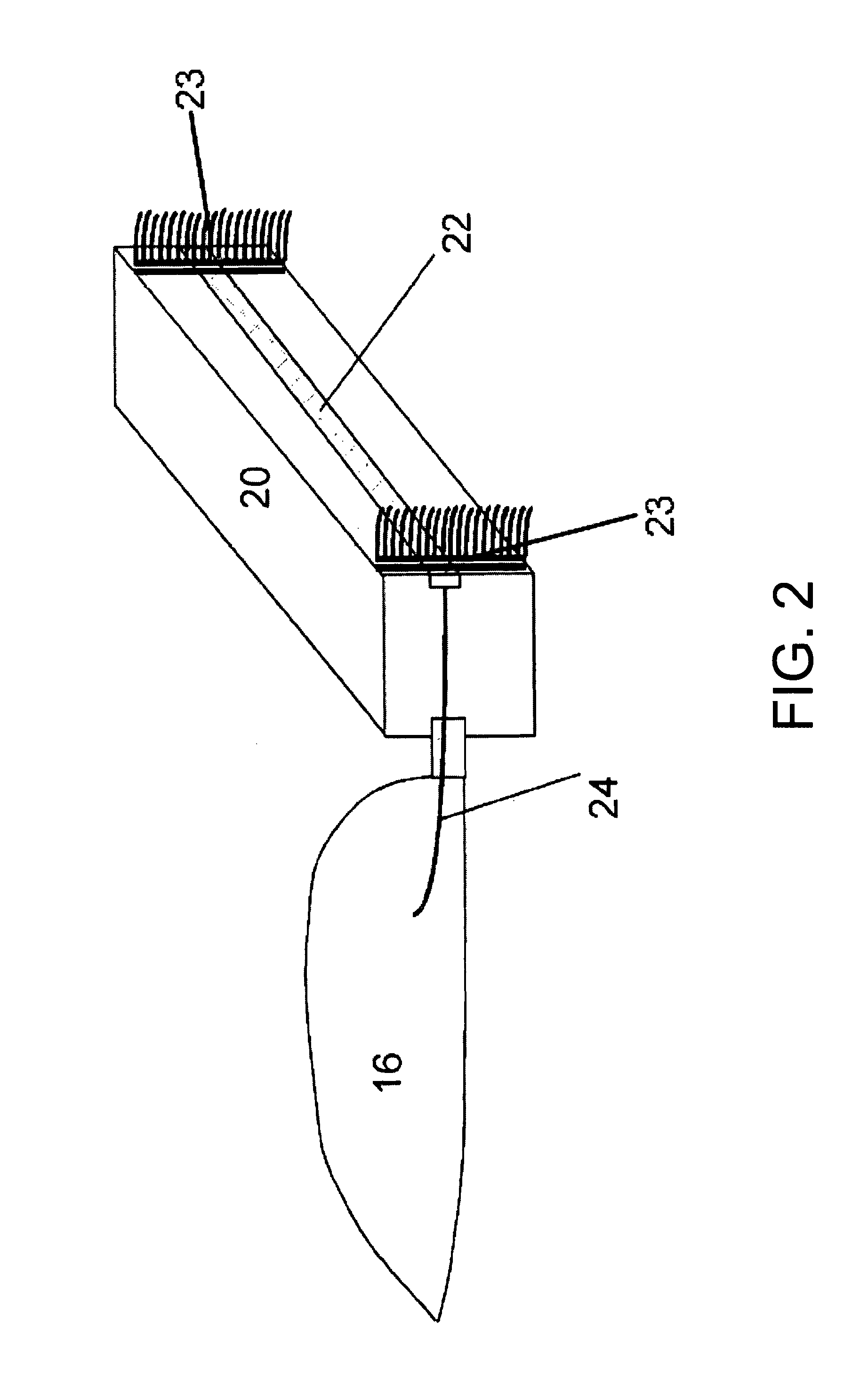Methods and system for providing power and signals in a turbine
a technology of wind power and signals, applied in the direction of wind power generation, rotors, machines/engines, etc., can solve the problems of unusual stress on wires, unsatisfactory turbine performance, and low efficiency of running wires, and achieve the effect of safe and durable manner
- Summary
- Abstract
- Description
- Claims
- Application Information
AI Technical Summary
Benefits of technology
Problems solved by technology
Method used
Image
Examples
Embodiment Construction
[0019]In the following description of various illustrative embodiments, reference is made to the accompanying drawings, which form a part hereof, and in which is shown, by way of illustration, various embodiments in which the invention may be practiced. It is to be understood that other embodiments may be utilized and structural and functional modifications may be made without departing from the scope of the present invention.
[0020]The invention disclosed herein entails several improvements to a variable length blade wind turbine design such as described in U.S. Pat. No. 6,902,370. FIG. 1 shows a wind turbine 2 on a foundation 4 with a tower 6 supporting a nacelle 8. Multiple blades 10 are attached to a hub 12 via a bolt flange 14. The hub 12 is connected to a drive train (not shown) within the nacelle 8. The blades 10 may be variable length blades having a root portion 18 and a tip portion 16. Sensors (not shown) may be attached to the tip portion 16. Some sensors that may be gainf...
PUM
 Login to View More
Login to View More Abstract
Description
Claims
Application Information
 Login to View More
Login to View More - R&D
- Intellectual Property
- Life Sciences
- Materials
- Tech Scout
- Unparalleled Data Quality
- Higher Quality Content
- 60% Fewer Hallucinations
Browse by: Latest US Patents, China's latest patents, Technical Efficacy Thesaurus, Application Domain, Technology Topic, Popular Technical Reports.
© 2025 PatSnap. All rights reserved.Legal|Privacy policy|Modern Slavery Act Transparency Statement|Sitemap|About US| Contact US: help@patsnap.com



